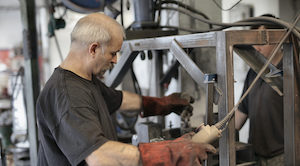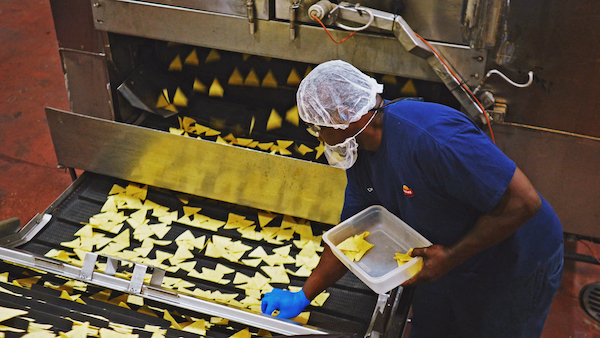On the heels of shutdowns and disruption caused by the pandemic, manufacturing in nearly all segments is building back quickly, fueled by pent-up demand for manufactured products. However as the sector grows, so does the potential for an increase in workplace injuries.
A Risky Business
Manufacturing can be an unpredictable and dangerous business, it’s one of the industries with the most workplace injuries. While the sector employs only 8.51% of the US workforce, it’s responsible for 15% of all private industry nonfatal injuries and illnesses.
421,400 non-fatal injuries were reported in manufacturing in 2019.
US Bureau Labor Statistics
While workplace injuries have long been one of the most common hazards in the industry, the risk has been recently exacerbated by an ongoing labor shortage and a workforce that’s aging faster than the overall national labor force.

Labor shortage
US manufacturing is expected to have 2.1 million unfilled jobs by 2030
A shortage of workers can increase the likelihood of worker injury, leading to lost work time and workers’ compensation claims. Workers taking on larger workloads to compensate for staffing challenges are at increased risk of injury, as are new and untrained workers hired due to turnover.

Aging Workforce
Nearly 1/4 of the US manufacturing workforce is 55 or older
A growing number of older workers in manufacturing means elevated risks of worker injuries and illnesses. Studies show when older workers are injured on the job, their injuries are often more severe and may take longer to recover from. Employees 55 years and older typically miss two weeks or longer for a workplace injury, compared to only five days for workers under 25 years old.
Strains and Sprains Drive Loss
Strain and sprain claims are a leading loss driver among manufacturers, representing 28% of injuries to manufacturing workers involving days away from work in 2019, according to the US Bureau Labor Statistics.
Typically caused by overexertion from repetitive motions, or improper handling and lifting of heavy objects, these common injuries lead to significant workers’ comp claims and costly lost work time.
Injuries cost the manufacturing industry more than $7.62 billion in 2019, with at least $3.48 billion attributed to musculoskeletal injuries.
Liberty Mutual Safety Index, 2019
The median days away from work for MSD cases in the manufacturing industry was 14, compared to 12 in the private sector, in 2020.
US Bureau Labor Statistics
Tech-Enabled Risk Prevention
Wearable technology can help reduce strain and sprain injuries among manufacturing workers, enhancing loss control. Wearables designed to reduce high risk movements actually help prevent injuries before they happen, keeping workers safe and productive.
For example, Frito-lay reduced injuries by 19%, and lost work time by 67%, when they deployed wearable tech to thousands of workers in 34 of their manufacturing and distribution centers. Pleased with the positive early injury reduction results, the company has expanded their wearable program to the PepsiCo beverage division.

Frito-Lay and PepsiCo are among many Fortune 500 companies reducing workplace injury risk with wearable tech. But this safety solution is not just for big brands anymore – middle market manufacturers are deploying wearables as well, provided at no cost with their workers’ compensation policies.
Workers’ comp programs with wearable safety technology aim to prevent loss by significantly reducing injuries such as strains and sprains. Through continuous coaching, wearables help workers change the way they move over time. A light vibration alerts workers each time they perform a risky movement on the job, helping them to increase their awareness and create safer habits.
Wearable tech can reduce injury frequency up to 60% and lost work days 72%.
Perr&Knight actuarial analysis, 2021
Wearables also provide employers with actionable data insights that reveal the areas and employees most at risk. This allows management to take targeted action to further reduce workplace risks and control loss.
Fewer workplace injuries lead to both a safer workforce, and to reduced premium costs and improved experience modification scores for policyholders.
Kinetic Insurance, in partnership with Nationwide, is pioneering a technology-driven approach to worker safety that benefits insurance carriers, brokers and policyholders. Our workers’ compensation offerings lower costs by equipping workers with free wearable technology that is proven to reduce injuries by as much as 60% and lost work days by 72%. Want to learn more? Click here to inquire about being appointed with Kinetic Insurance.
